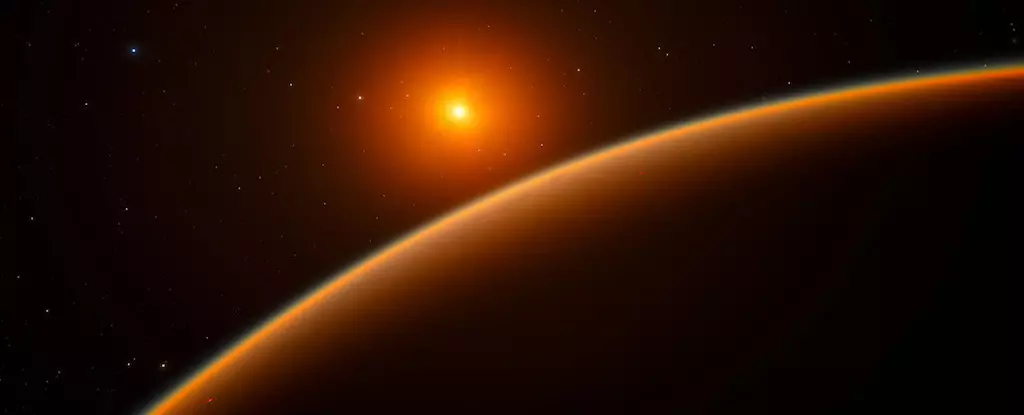A groundbreaking study has shifted our understanding of exoplanets within our galaxy, suggesting that Earth-like planets, or ‘super-Earths,’ might be far more prevalent than scientists once believed. Conducted by a team led by Weicheng Zang from Harvard’s Center for Astrophysics, the research focuses on a remarkable finding: a super-Earth orbiting its host star at a distance akin to where gas giants like Jupiter reside. This discovery challenges previous notions about the distribution of exoplanets in the Milky Way, revealing a more complex narrative than that of larger gas and ice giants dominating the scene.
The Journey of Discovery
Using data obtained from the Korea Microlensing Telescope Network (KMTNet), the researchers analyzed the gravitational microlensing effect—an optical phenomenon where a massive object, acting as a lens, magnifies the light from a background star. This technique proved invaluable as it enables the detection of planets that orbit much farther from their stars, which are generally elusive to traditional observational methods. The study, featuring three times the sample size of previous analyses, presents a clearer picture not just of super-Earths but also of the variability among different exoplanets orbiting at various distances.
Zang emphasized the novelty of their finding when he stated, “We found a ‘super-Earth’… in a place where only planets thousands or hundreds of times more massive than Earth were found before.” This highlights both the uniqueness of the discovery and the need to recalibrate our expectations regarding how different types of planets can coexist in a single solar system.
A Closer Look at Super-Earths
The term ‘super-Earth’ refers not just to planetary size, but implies a significant range in composition and potential habitability. Unlike gas giants and ice giants, Super-Earths fill a unique niche in the planetary spectrum. The recently studied super-Earth, discovered at a distance similar to that of Jupiter, proposes a possibility for these planets to form under conditions entirely different from our own Solar System. This anomaly hints at a plethora of unexplored worlds that could potentially harbor diverse atmospheric conditions, and thus varying degrees of habitability.
Co-author Andrew Gould remarked on this intricate balance, “It’s very interesting,” indicating the implications of divergent planetary demographics derived from their data. This vital insight not only enhances the scientific narrative about planetary formation but also proposes an intricate web of possibilities concerning the existence of life beyond Earth.
Broadening the Scope of Exoplanet Studies
With their results indicating that about one-third of stars in the Milky Way could host super-Earths with Jupiter-like orbits, one cannot help but be optimistic about our cosmic neighborhood. Traditionally, the focus has been on short-period exoplanets that can easily be detected due to their proximity to their host stars. However, Zang and his team’s research illustrates that super-Earths might be just as common outside the inner, more densely populated regions.
This paradigm shift underscores a pressing need for further exploration of the outer chambers of planetary systems, as they may yield critical clues about the formation of varying planetary types and their potential habitability. Researchers like Jennifer Yee from CfA’s Smithsonian Astrophysical Observatory echo this sentiment when she notes, “planets, and especially super-Earths, in orbits outside the Earth’s orbit are abundant in the galaxy.”
Understanding the Microlensing Technique
Microlensing presents a novel framework for exoplanet studies, though it comes with challenges. The rarity of microlensing events heightens the difficulty of establishing notable findings. As Richard Pogge from Ohio State points out, “Finding a microlensing star event is hard. Finding a microlensing star with a planet is hard squared.” Such comments reflect the meticulous efforts and stellar ingenuity required to penetrate the dark recesses of the galaxy, pushing the boundaries of what we thought we understood about celestial formations.
The reliance on microlensing mirrors a more generalized trend growing within the scientific community: the acceptance of novel methods to explore the cosmos. It suggests a renaissance of curiosity about the universe, where each breakthrough reconstructs the existing frameworks while broadening humanity’s understanding of its possible neighbors.
A Vision for Future Discovery
While the findings from this study signify an important leap in exoplanet research, they also reveal just how nascent this field remains. The researchers themselves caution that much remains unknown about the characteristics and potential for life—or conditions unfit for life—on these planets. Nevertheless, there is an undeniable excitement surrounding these discoveries, reminding us that the grand narrative of our cosmos is still being written and that profound discoveries await us in the more distant, unexplored realms of the universe.

